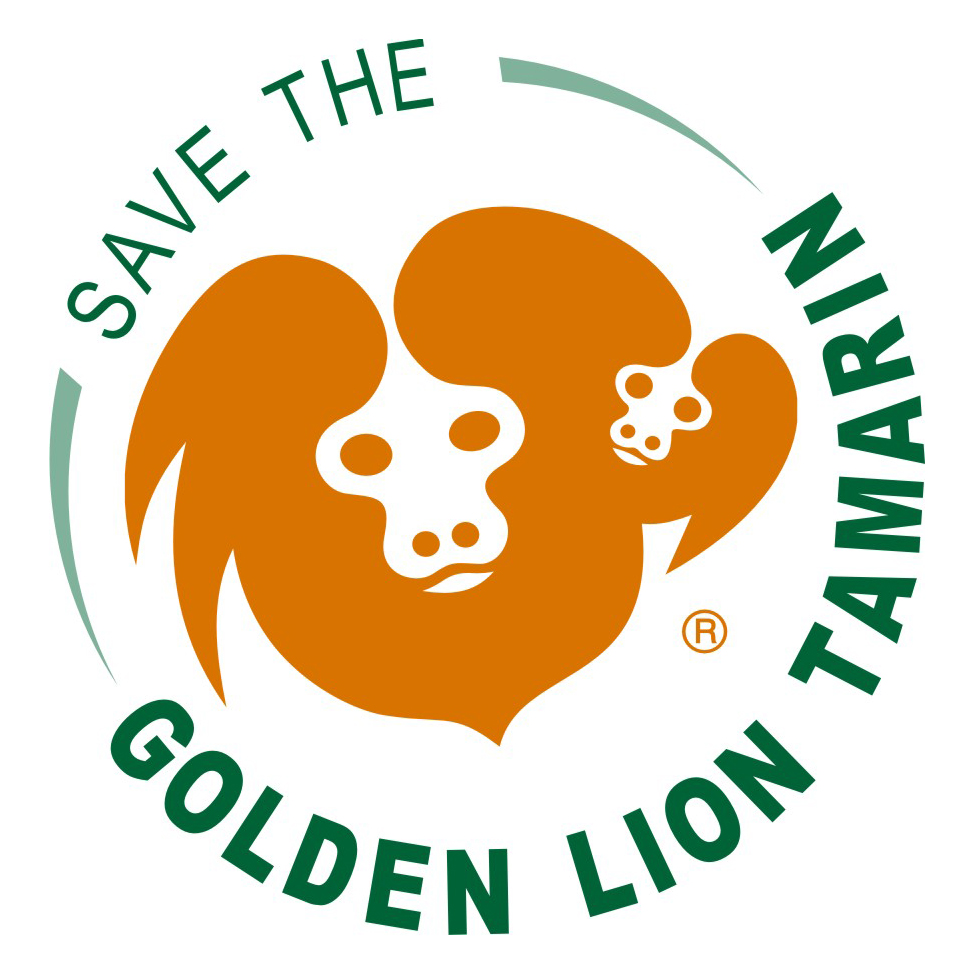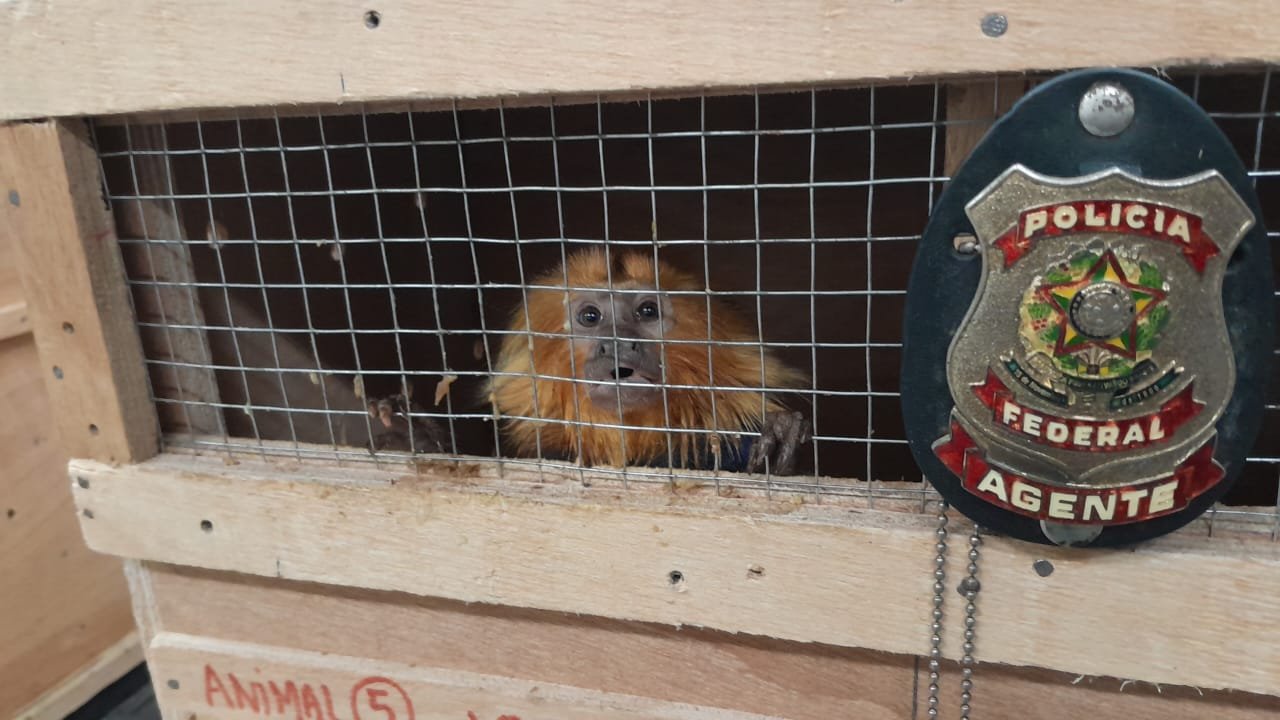Golden Lion Tamarins apprehended in Togo return to Brazil
The return of 17 golden lion tamarins apprehended on the West African coast was completed Feb. 25 when they returned to Brazil. The animals will have health exams and undergo a quarantine period.
Apprehended GLTs on the trafficker’s sailboat in Lomé, Togo, Feb. 16, 2024.
Credit: APF Foxtrot/Brazilian Federal Police; used with permission
One of the 17 trafficked GLTs upon repatriation to Brazil on Feb. 25, 2024.
Credit: APF Foxtrot/Brazilian Federal Police; used with permission
The 17 GLTs and 12 Lear’s macaws, both endangered species found only in Brazil, were rescued from international trafficking. The animals crossed the Atlantic Ocean in terrible conditions aboard a sailboat, but were intercepted by maritime police in Togo, a country on the West African coast. On Feb. 24, the GLTs and macaws landed on Brazilian soil and are undergoing quarantine and veterinary evaluations.
The Brazilian government mobilized multiple agencies and sent a plane to Togo to repatriate the GLTs and macaws. Four people aboard the sailboat were imprisoned in Togo, where they will face environmental crime charges. A global support network facilitated the Brazilian rescue operation. Now that the GLTs are protected and under adequate care, it is important to recognize the work of everyone involved. Associação Mico-Leão-Dourado, a Brazilian nonprofit organization supporting GLT conservation and partner with the U.S.-based nonprofit Save the Golden Lion Tamarin, mobilized the international support network. The organizations send their sincere thanks to:
The Brazilian Ministry of the Environment and Climate Change for backing the entire process;
IBAMA and the Brazilian Federal Police who carried out the rescue of the animals in Togo;
The Ministry of Foreign Relations, especially the Brazilian ambassador in Togo, Sr. Nei Futuro Bitencourt, who in addition to overseeing the necessary political, administrative, and legal procedures, demonstrated a passionate commitment to save the lives of these animals. Sr. Nei personally cared for these animals until the arrival of Brazilian veterinarians. AMLD provided the Brazilian authorities with information about the feeding and basic care of GLTs;
The Chico Mendes Biodiversity Conservation Institute (ICMBio) National Center for Primate Research and Conservation, especially to Mônica Montenegro, an environmental analyst who monitored the entire process and identified the best location in Brazil to receive the animals;
The São Paulo Zoo in Brazil, especially to biologist Mara Marques, who is responsible for the management of the captive population of GLTs in Brazil;
IBAMA veterinarian Juliana Junqueira, who was personally on site in Togo to treat the animals before their departure, maintaining communication with professionals connected to AMLD and the international network of partners;
The Federal Police officer (whose name will remain undisclosed) who also was in Togo, for their dedication to the investigations still underway;
The Brazilian institution that received the animals for quarantine (for security reasons, the institution is unnamed);
The non-governmental organization Freeland Brasil, especially its Executive Secretary Juliana Ferreira, who partnered with AMLD and other organizations throughout this effort;
The international network of professionals of the European Association of Zoos and Aquariums who collaborate with ICMBio in the management of the captive population of GLTs in Europe. The EAZA team remained connected online with the IBAMA veterinarian, as she cared for the animals before returning to Brazil. They are Kristin Leus, Copenhagen Zoo; Bryan Carroll, Bristol Zoological Society (UK); Dominic Wormell, Tamarin Trust (UK); Andrea Dempsey, West African Primate Conservation Action Project Manager and Hertfordshire Zoo (UK); Thierry Petit, Zoo La Palmyre, (France).
Looking to the future, two important actions are needed. The first step is to evaluate the animals’ health during the quarantine period and consider the possibility of returning them to the wild. Some of the rescued GLTs have identifying marks made by AMLD that allow the identification of the locations where they were stolen from their families.
GLTs live in family groups that maintain permanent territories. If researchers and scientists are able to identify from where they were taken, it may be possible to return them. The decisions on if or how to safely return these GLTs to their forest will be based on the scientific knowledge accumulated over decades of work with this species.
The second step is to encourage law enforcement authorities to increase their efforts to stop the illegal trafficking of GLTs and other wild animals. International trade, now illegal, was one of the principal historic causes of the severe reduction in GLT numbers in the wild. Trade in GLTs has stopped in recent years. Unfortunately, the three cases registered in the last year affirm that international traffic in GLTs has returned.
Everyone around the globe can help by reporting to the proper authorities any evidence of wildlife trafficking.


